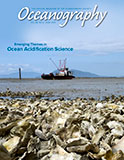Article Abstract
Diverse instruments, both custom built and commercially available, have been used to measure the properties of the aqueous CO2 system in seawater at differing levels of autonomy (automated benchtop, continuous underway, autonomous in situ). In this review, we compare the capabilities of commercially available instruments with the needs of oceanographers in order to highlight major shortfalls in the state-of-the art instrumentation broadly available to the ocean acidification (OA) scientific community. In addition, we describe community surveys that identify needs for continued development and refinement of sensor and instrument technologies, expansion of programs that provide Certified Reference Materials, development of best practices documentation for autonomous sensors, and continued and expanded sensor intercomparison experiments.

